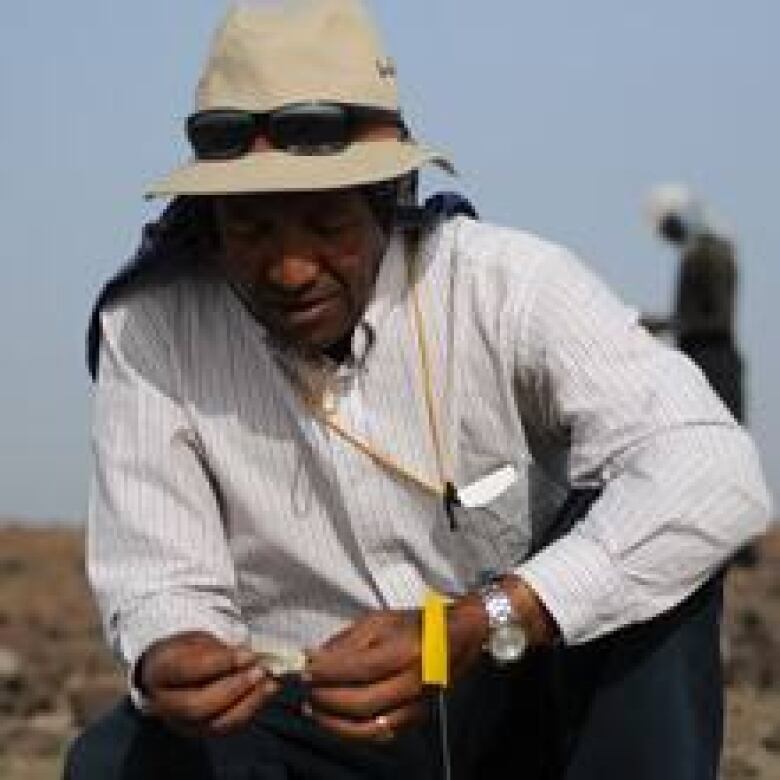Newly discovered pre-human walked near 'Lucy'
But new species was also a tree climber

All about Lucy
"Lucy" is the name given tothe firstpartial skeleton ever found of the species Australopithecus afarensis. She wasdiscovered in Ethiopia's Awash Valley in 1974 by U.S. paleoanthropologist Donald C. Johanson andnamedafter the Beatles song Lucy in the Sky with Diamonds. No foot bones were found with her skeleton, butother bones showed she was able to stand upright. Recent analysis of foot bones from anotherspecimenshowA. afarensis had feet similar to those of modern humans.
A ancient hominin species recently discovered in Ethiopia appears to add a new branch to the human evolutionary tree.
Eight foot bones from the yet-to-be named species were discovered in 2009 in the Afar region of Ethiopia, according to a study published Wednesday in Nature.
The fossil remains show the new hominin lived 3.4 million years agoabout the same time as and not too far from Australopithecus afarensis, the species of the famous skeleton known as "Lucy." A. afarensis, which walked on two legs, was previously believed to be the only hominin ofits time and therefore assumed to be the direct ancestor of modern humans.

Surprising2ndhominin lineage
He said the new discovery shows hominin evolution didn't follow a single lineage, contrary to what many scientists previously thought.
Like A. afarensis, the new species has characteristic features in two of its joints adapted to walking on two legs features unique to hominins and not found in apes or monkeys.
Hominins and hominids
Humans are part of a larger group of closely related human-like species, such as Neanderthals, called hominins. All hominins are themselves part of a larger group known as hominids that includes all the great apes such as chimpanzees and gorillas.
But unlike A. afarensis and modern humans, the new hominin has no arch running from its heel to the ball of its foot, and therefore could not have walked long distances. The arch absorbs energy, allowing humans to apply a greater load to each foot while walkingor running.
The big toe of the new species is also quite different from that of A. afarensis and modern humans.
"It has a grasping big toe which indicates that it was doing quite a bit of climbing," said Bruce Latimer, an anthropologist at Case Western Reserve University in Cleveland.

Latimer said the contrast between the foot of the new species and that of A. afarensis hammers home the fact that A. afarensis was "fully committed" to walking on two legs.
Haile-Selassi said researchers are hoping to recover more specimens from the new species that will allow them to have a better idea of how it fits in the hominin family tree so they can give it genus and species names.
However, he said, despite the new find, it is still likely that modern humans descended from a more recent hominin calledAustralopithecus garhi, which lived 2.5 million years ago and is probably descended from A. afarensis.












_(720p).jpg)


 OFFICIAL HD MUSIC VIDEO.jpg)
.jpg)



























































































